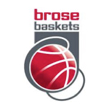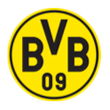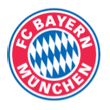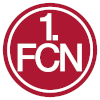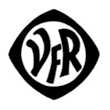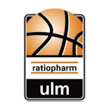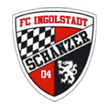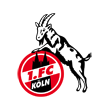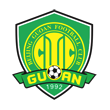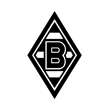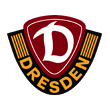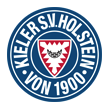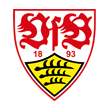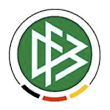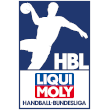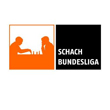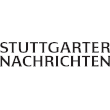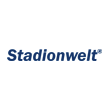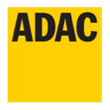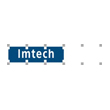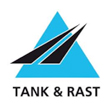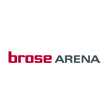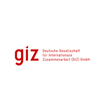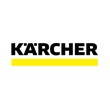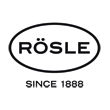CURRENT AFFAIRS & CASES
Informazioni attuali sull'azienda nella panoramica.
In questa panoramica vi teniamo aggiornati sui nostri progetti attuali, le attività e altro ancora.
Professional sponsorship management as a financing instrument
The topic of sponsorship - especially in sports - is no longer a novelty these days, but this does not mean that its potentials are also used accordingly by amateur and mass sports clubs. A contribution by Prof. Alfons Madeja and Maximilian Madeja of SLC Management.

Of course, one associates with the term sponsorship usually immediately the topics "money" and "business" - which have a rather positive in the direction of revenue generation, the others rather negatively in the direction of commerce. Often own assessment is influenced by sponsorship sponsorship in professional sports. It is precisely in this context that all too often that amateur and grassroots sports clubs are not as amateur and popular sports clubs sports, there is hardly any chance of generating significant sponsorship income for their own club. to generate for their own club. "You wouldn't know what value value you should put on it" and "you couldn't really tell a company what it could what advantage it can derive from sponsorship other than a bit of publicity. sponsorship" - are just two of the two of the most frequently mentioned Answers, if club responsible persons speak about their problems in the Sponsoring.
The professionalization of the treatment of the topic sponsoring can and must however also in the amateur and grassroots sports be tackled, in order to develop or important source of funding to develop or expand. In contrast to sponsoring, the concept of classic patronage (patronage), or the donation system. The patron or donor usually wants to remain to remain in the background as a sponsor and does not expect any corresponding consideration or publicity. A sponsor is an equal contracting partner who expects a corresponding return for every service provided. Sponsorship is a reciprocal business.
The success of sponsorship commitments in amateur and popular sports is therefore governed by the same principles apply to the success of sponsorship professional sports. It is therefore important to the following important contents of sponsoring of sponsoring should be kept in mind: "Sponsoring involves the promotion of persons and/or organizations in the sporting, cultural and social spheres according to the principle of the principle of performance and consideration. The sponsor provides financial resources, materials or services and expects the "sponsored" to make a corresponding image corresponding image commitment for for his or her company. In practice, therefore, there are four basic four basic steps to professionalize and optimize the organization and processes of club sponsoring. and optimize them. These steps are also found in the SmartSponsoringManagement SSM© program of SLC Management for amateur and popular sports clubs.

1. know your value.
To know the value of your own club in the Sponsoring to be able to estimate, you have to know on the one hand your target groups and on the other hand the marketable assets in type, scope and Quality, with which one reaches the target group, recognize. In the analogy of successful sponsorship management between the professional sports and amateur and popular sports, it should therefore be noted: Clubs are a decisive factor in society and thus "have" in their sphere of influence many people in their sphere of influence who are at the same time potential buyer groups of products and services from companies. The following applies here: In sponsoring, there are no first league customers and amateur customers, i.e. first or second "class" customers. Both are equal in their willingness to pay and purchasing power are to be assessed and viewed in the same way. Amateur and grassroots sports clubs accordingly also have have a range within which they can they reach these target and buyer groups of companies. Here is the case for a club with 4,000 - 10,000 members within a city or region, there is usually a quality of contact and regional penetration of the target group for the sponsor for the sponsor than in the case of a professional Professional club.
2. Market your value .
It is important that companies, or. potential sponsors, are provided with appropriate documentation and data data that illustrate the opportunities and the benefits of the potential sponsorship commitment individually. The assumption that this is only players in professional sports can provide (clubs) (clubs) and demand (sponsors), is no longer true today. Amateur and grassroots sports clubs must also face up to this challenge as part of the professionalization of sponsorship management. professionalization of sponsorship management and prepare relevant documentation for potential sponsors. documentation for potential sponsors, from which, in addition to the basic the basic information information about the sponsorship offer important data such as awareness & acceptance of the sponsor, awareness & acceptance of the products and services products and services, expectations of the sponsor, and data on the sponsor's information and Information and interaction channels of the target group. A large part of this data can be used by clubs for their sponsorship management, for example, via the Club Information System CIS©, which SLC Management also offers explicitly for the amateur and popular sports which enables club managers to perform data-based club management. Through the use of this tool, one club was able to club was able to increase its sponsorship by more than 200% within 12 months. by more than 200% within 12 months. In addition the professionalization of the sponsorship management in this context, the sponsorship management in times of the Corona pandemic Overall sponsorship sustainably extended and expanded.
3. Know your sponsors .
To question the goals, motivations and needs of a potential sponsor is needs of a potential sponsor is already important in the first talks with potential but also with but also with existing sponsors. Only those who know these can and motivate him to commit himself to his club and to understand that the club is the right one for these goals. club offers the right platform for these platform for these goals. A sponsor (company) associates its commitment with certain goals such as increased sales, awareness and image effects. He wants to achieve these to achieve within the scope of its commitment and expects the sponsor (club) to sponsor (club) that the latter will to enable him to achieve these goals at all to achieve this goal at all, or that the sponsor a suitable platform available.
4. Prove the added value.
Finding sponsors is a challenge - keeping sponsors, especially in difficult times times like the current pandemic, is certainly the bigger challenge. Therefore a club should sponsorship management, a club should, in its own interest, provide evidence that the that the sponsor's commitment has been implemented and that the club has and that the association itself has successfully contributed as a platform in line with the sponsor's objectives. In the SmartSponsoringManagement SSM© the club can build up a structured reporting set up a structured reporting system that provides the sponsor with added value in the form of relevant data and insights from the club information system. insights from the club information system CIS© and sponsoring controlling for the continuation and optimization of the commitment. Optimization of the commitment illustrated and proven.
Conclusion .
A sustainable professionalization of sponsorship management in amateur and popular sports clubs is worthwhile and enables the development of sponsoring as an important source of financial resources. The factor of human resources and qualification plays an important role in the process of professionalization. process of professionalization but this, too, can be improved, especially at the beginning, by means of external support, training training and tools tailored to the amateur and grassroots sports sector. Breitensportbereich cope in the short and medium term.
About the authors:
- Prof. Dr. Alfons Madeja is a professor of business administration and sports management and an expert for the Sports Committee of the German German Bundestag. For more than 30 years he has been a partner and advisor to various Bundesliga clubs in the premium sports premium sports such as soccer, handball, basketball and ice hockey as well as of sports associations and Clubs in the amateur and amateur sports sector.
- Maximilian Madeja is managing director of the management consultancy SLC Management GmbH and for ten years in the areas of market research, data-based consulting, digitalization and trend analysis internationally for Bundesliga and popular sports clubs. He is a lecturer at the University for Applied Management in the areas of Leadership and control in sports organizations and digitization.
For more information, contact
Maximilian Madeja
Managing Director, Chief Research Officer (CRO).
Email: m.madeja@slc-ag.com
Fon: +49 (0) 911 - 54 81 830
or directly on our contact point for amateur and grassroots sports clubs at https://www.slc-management.com/customers/vereine/
